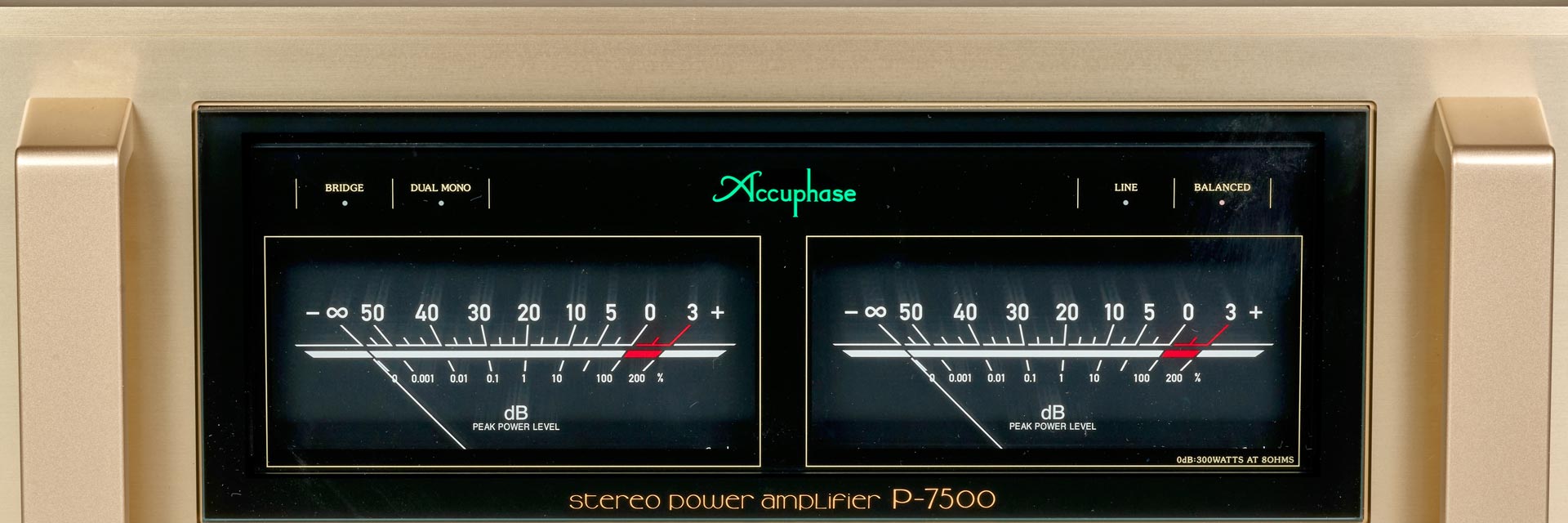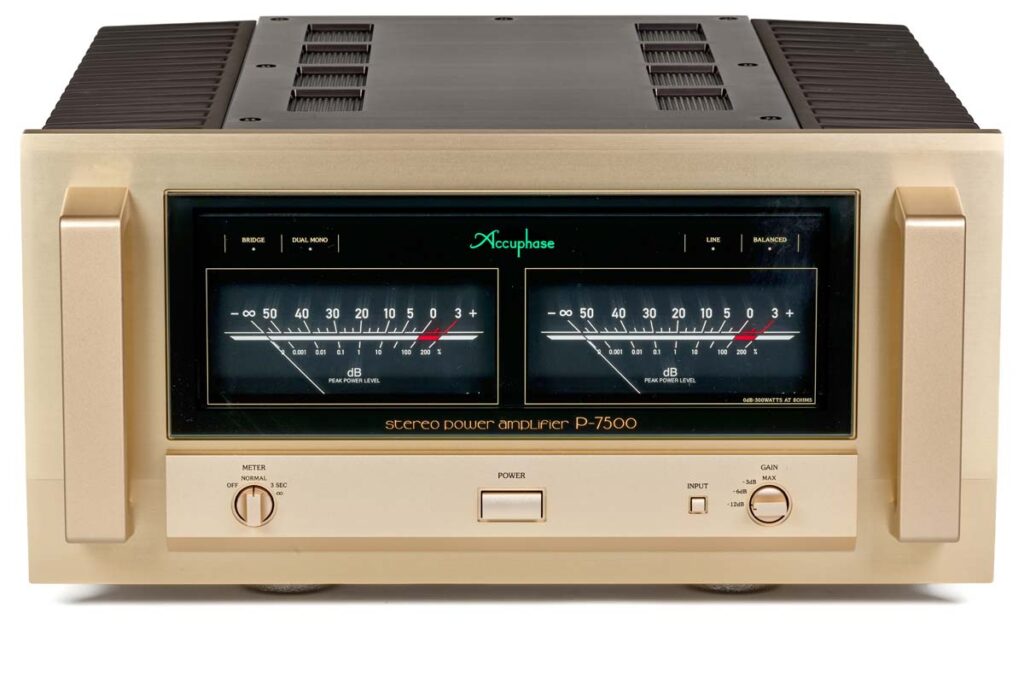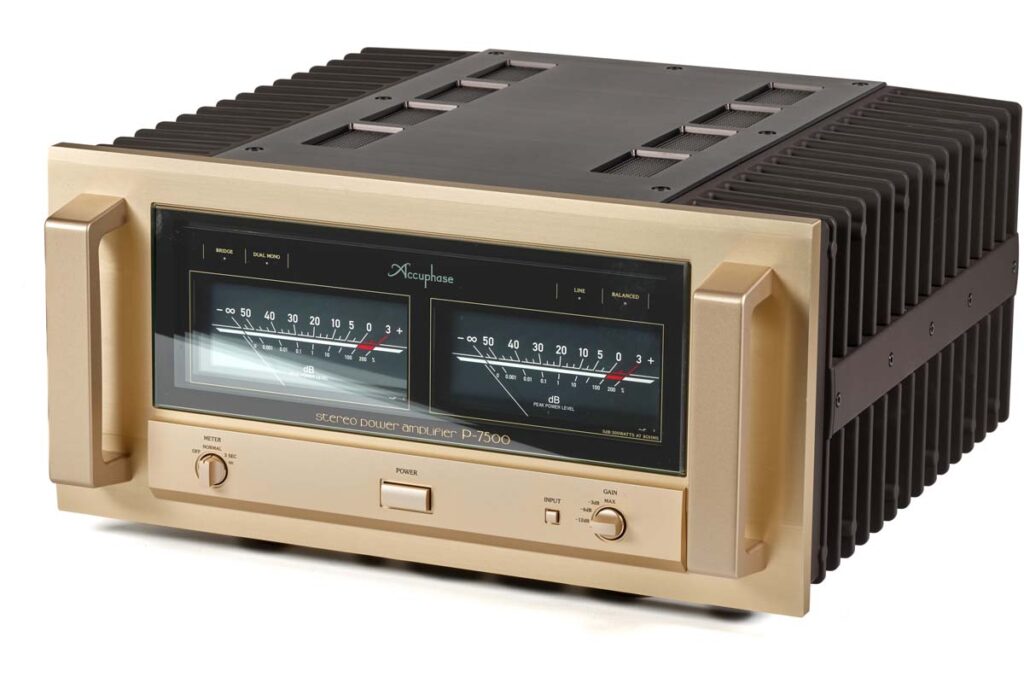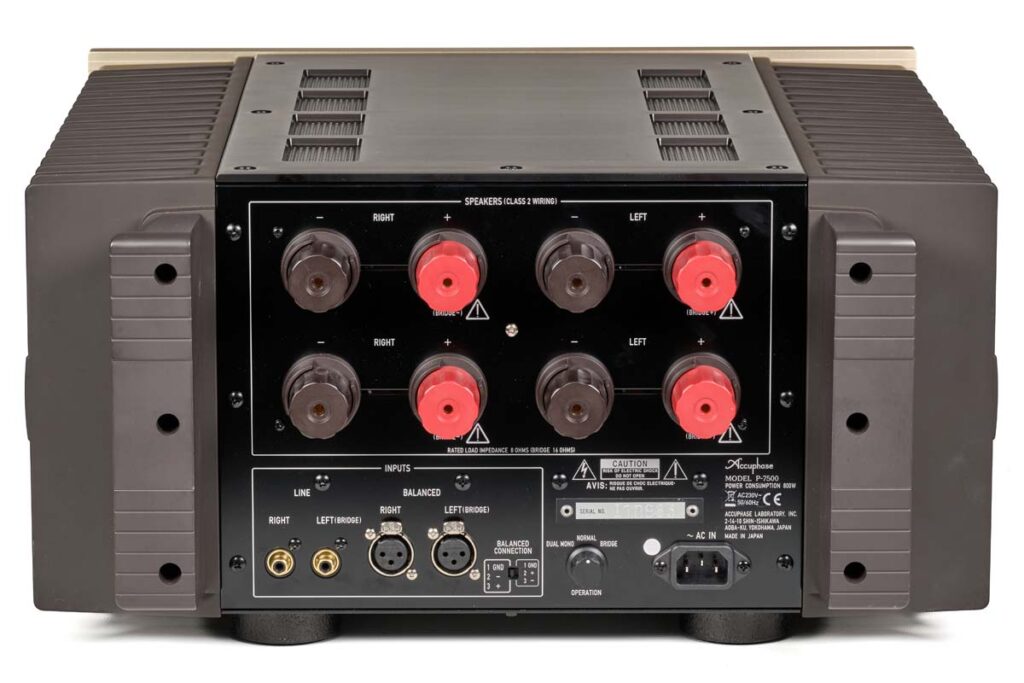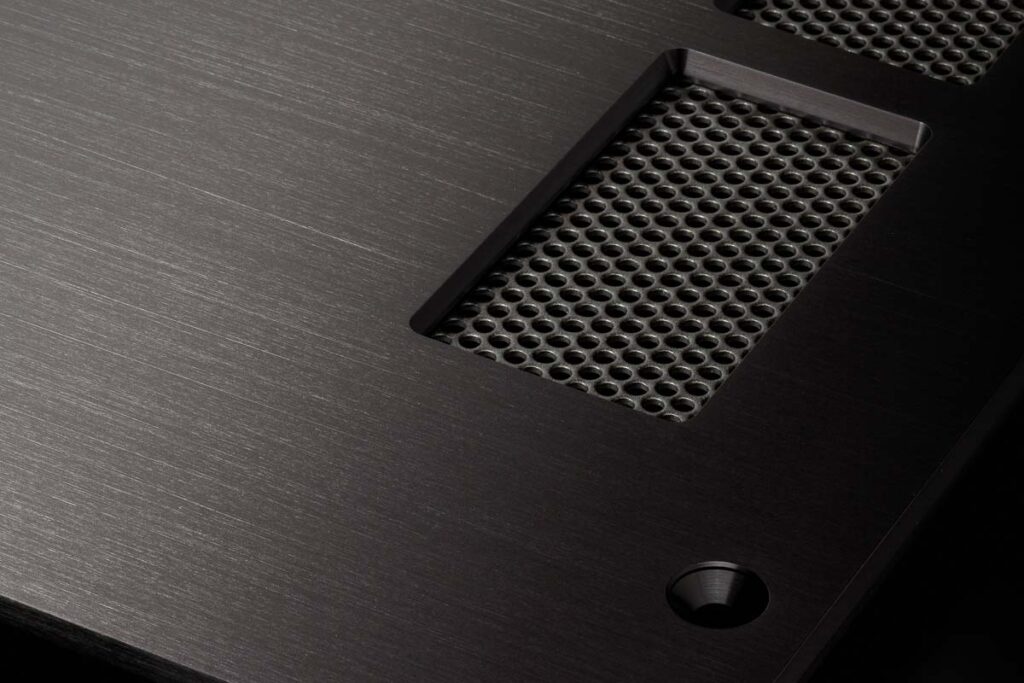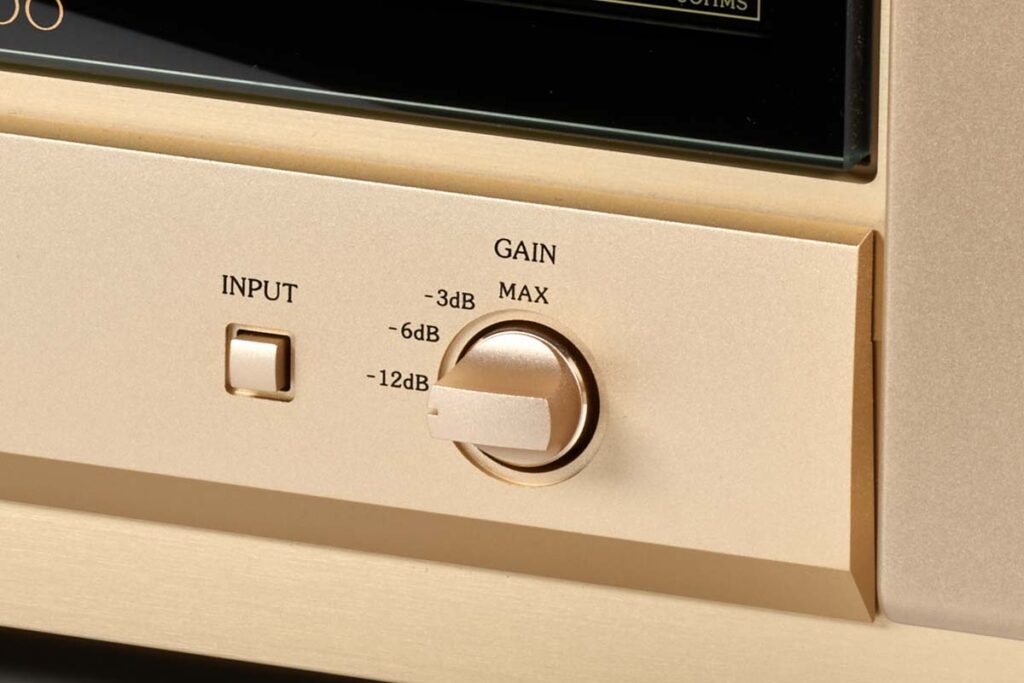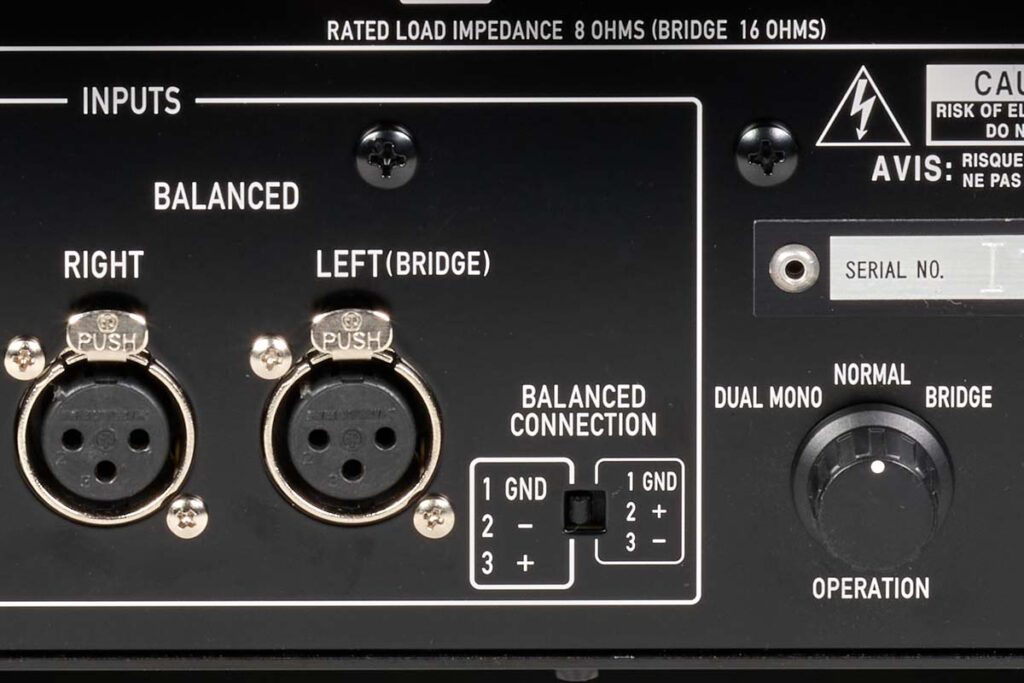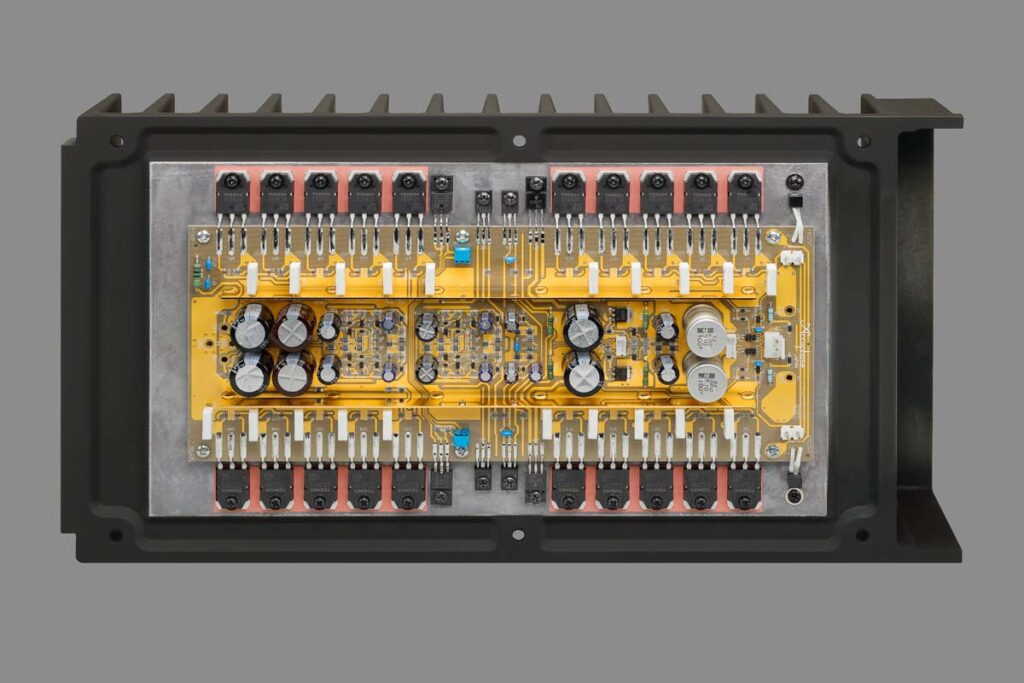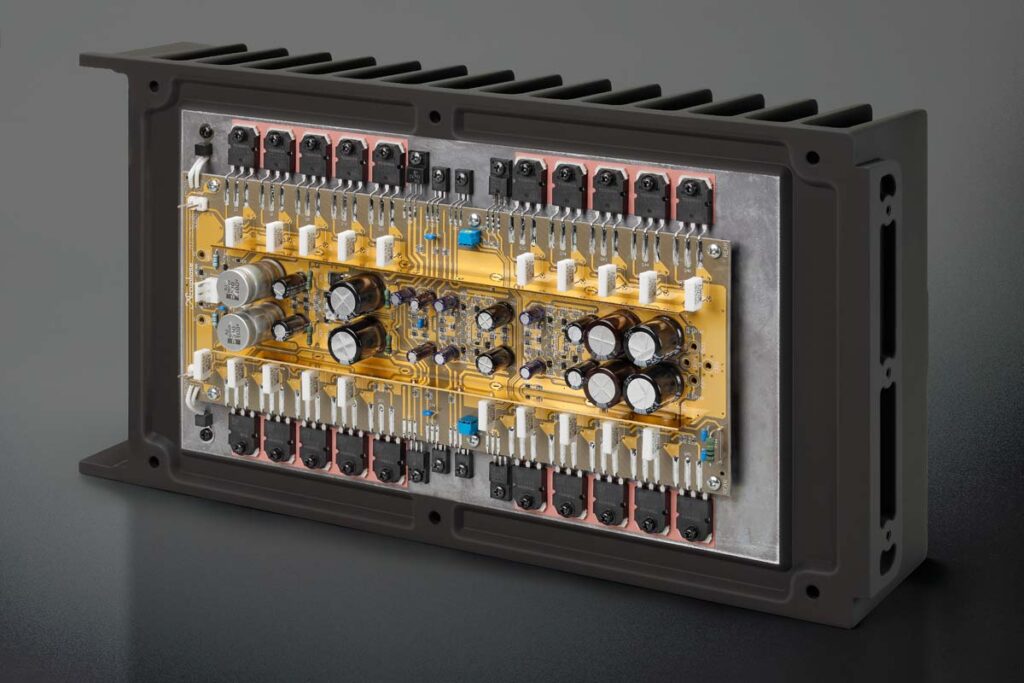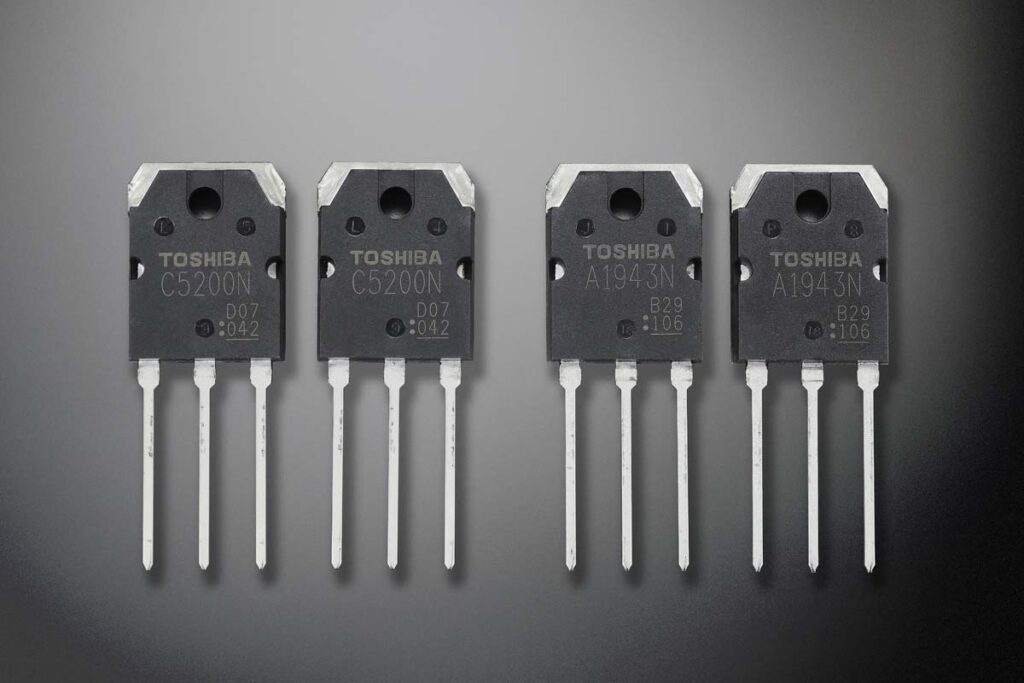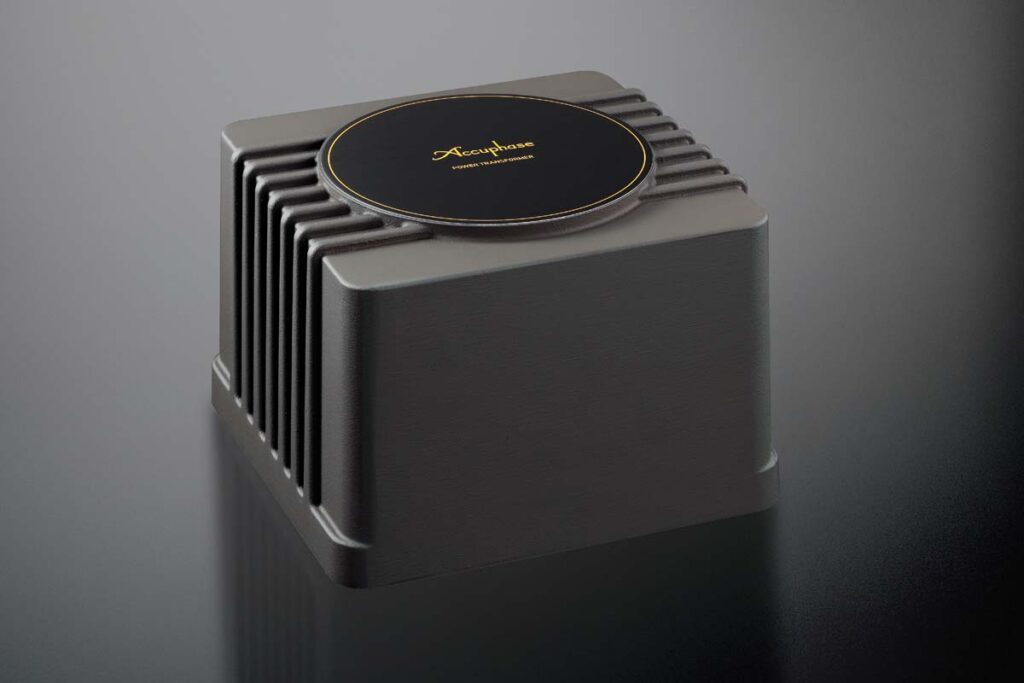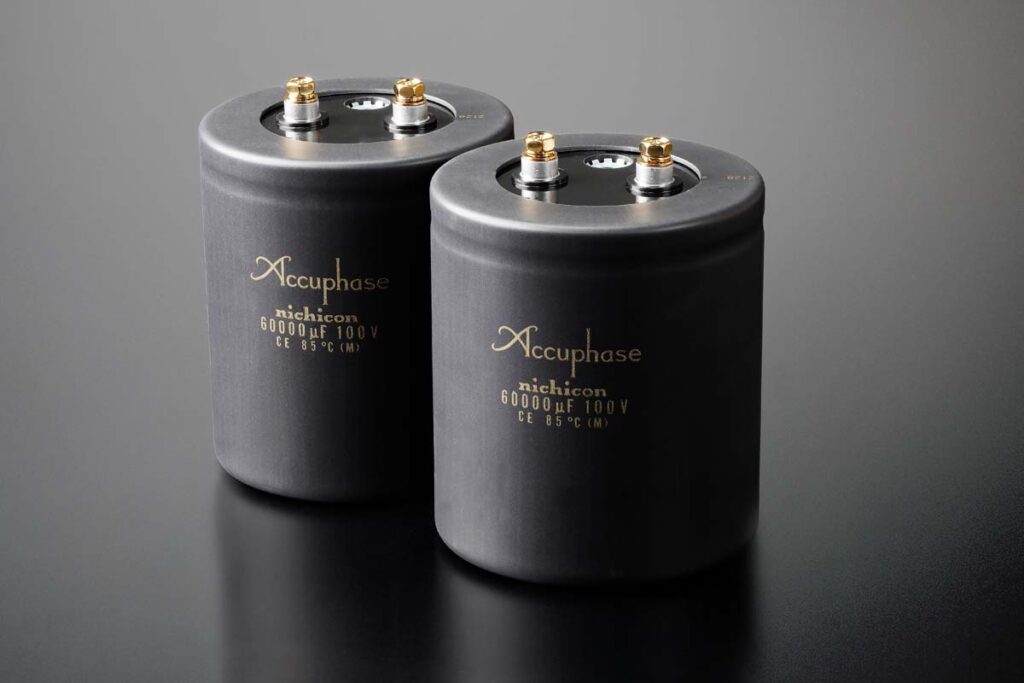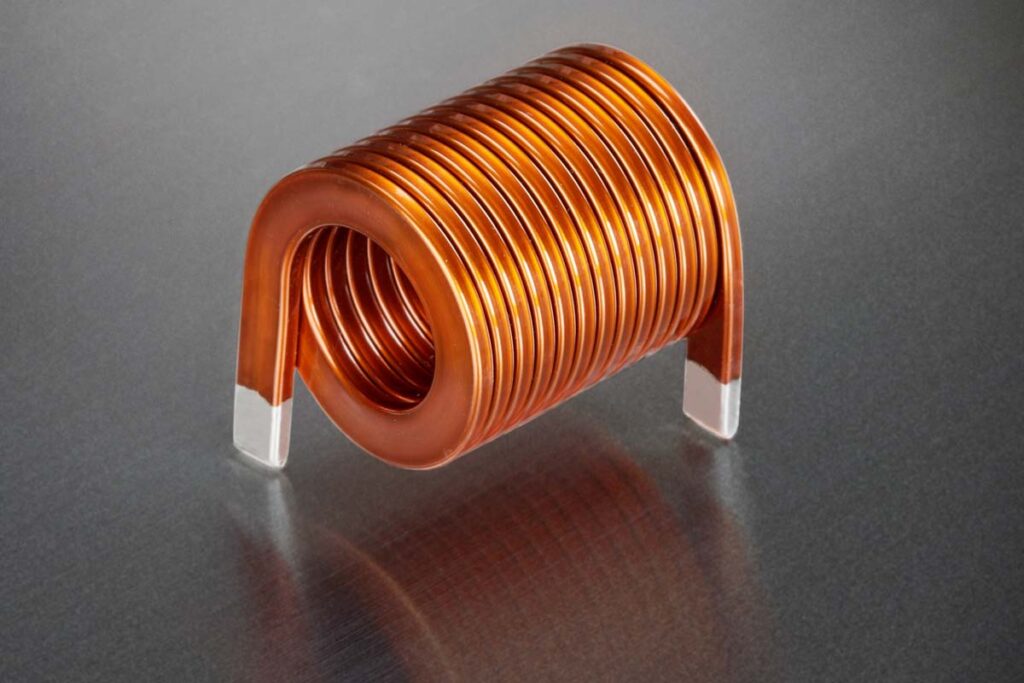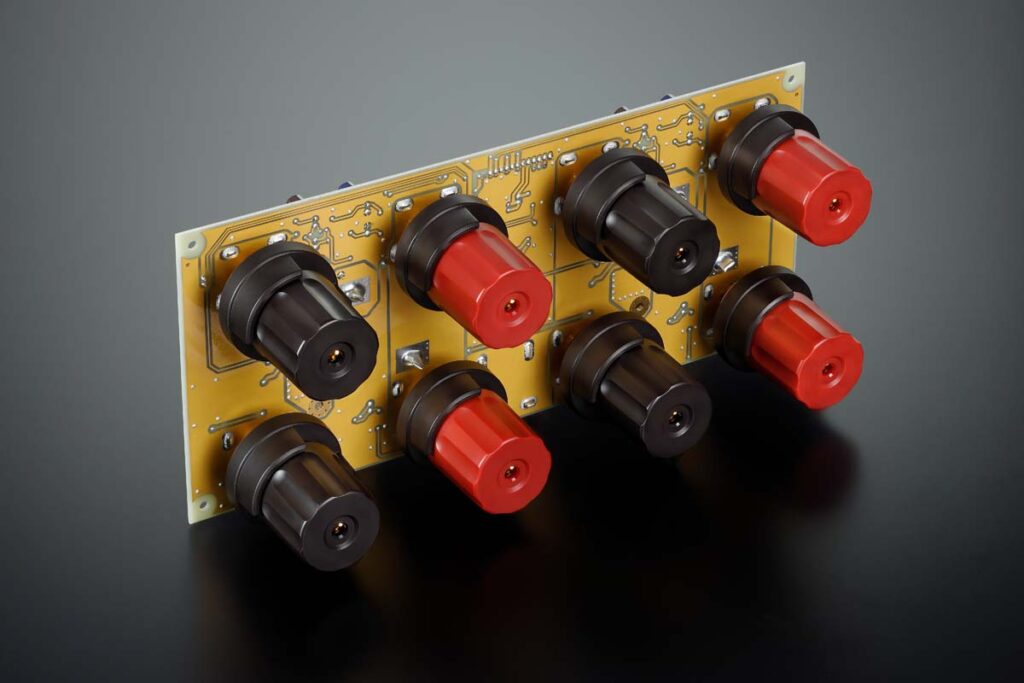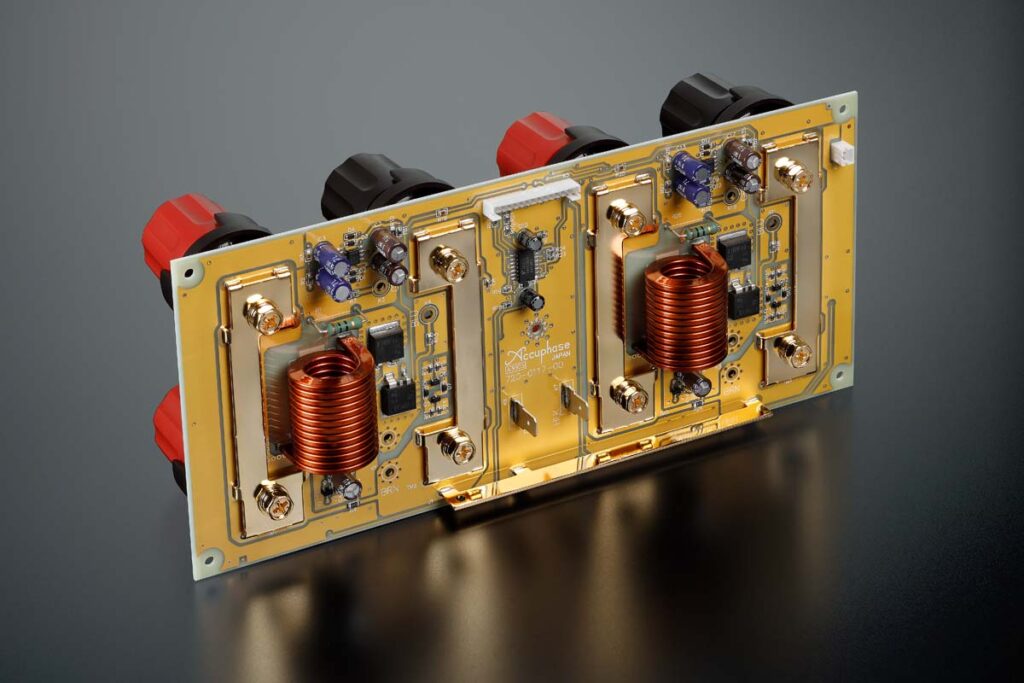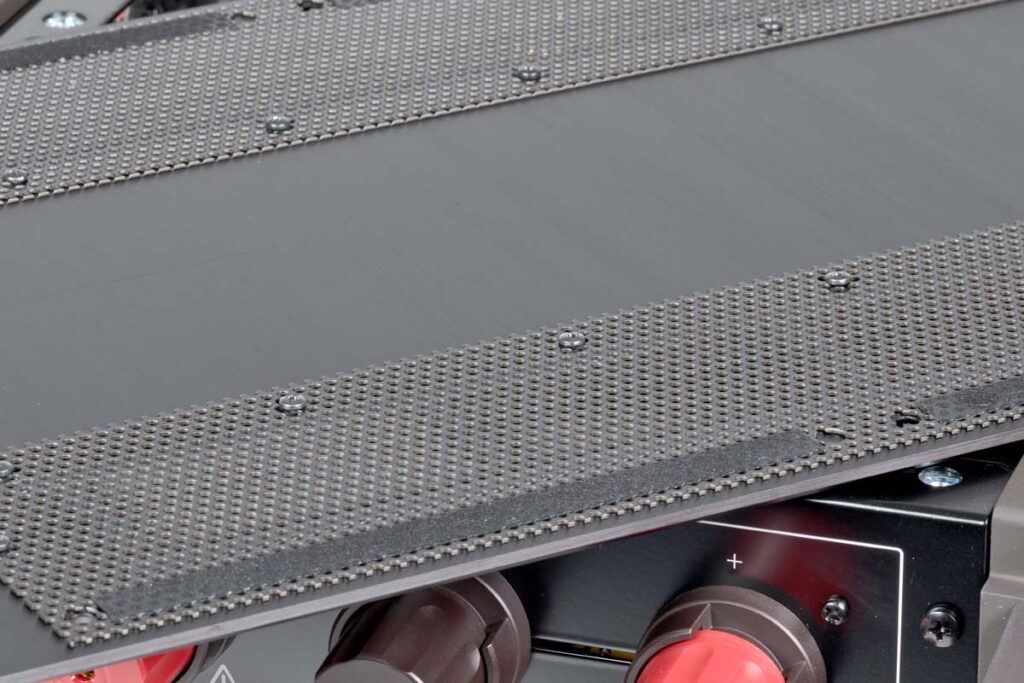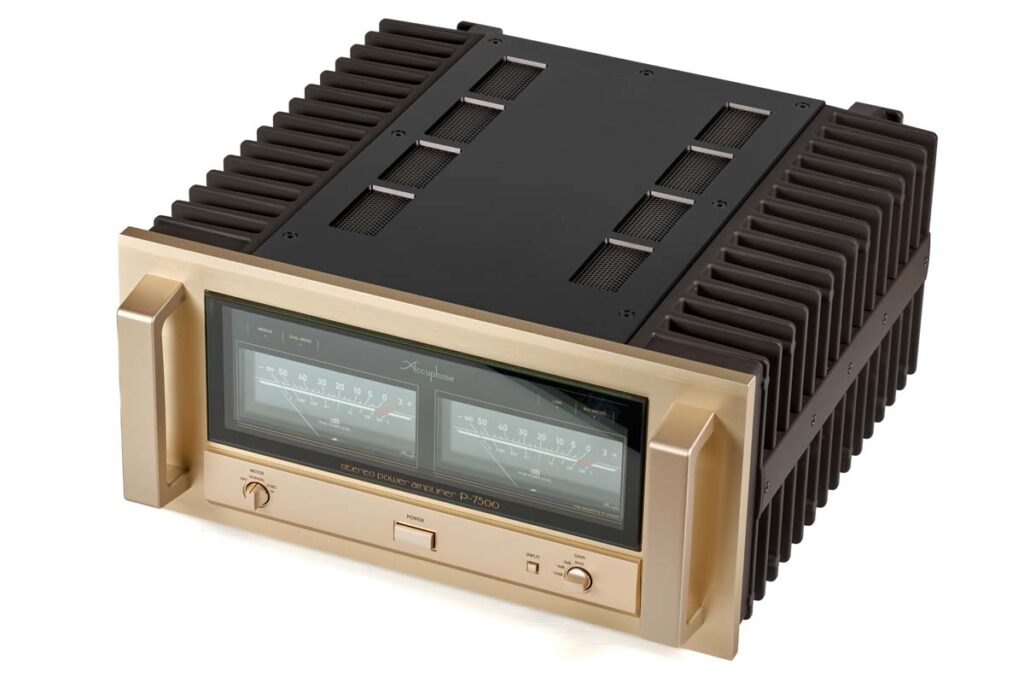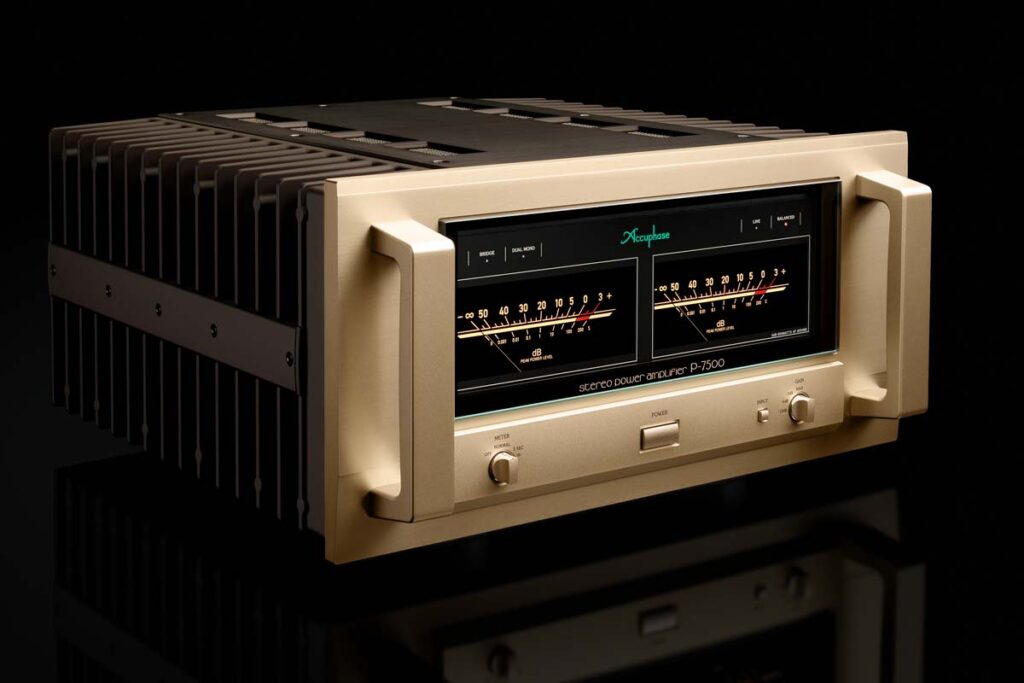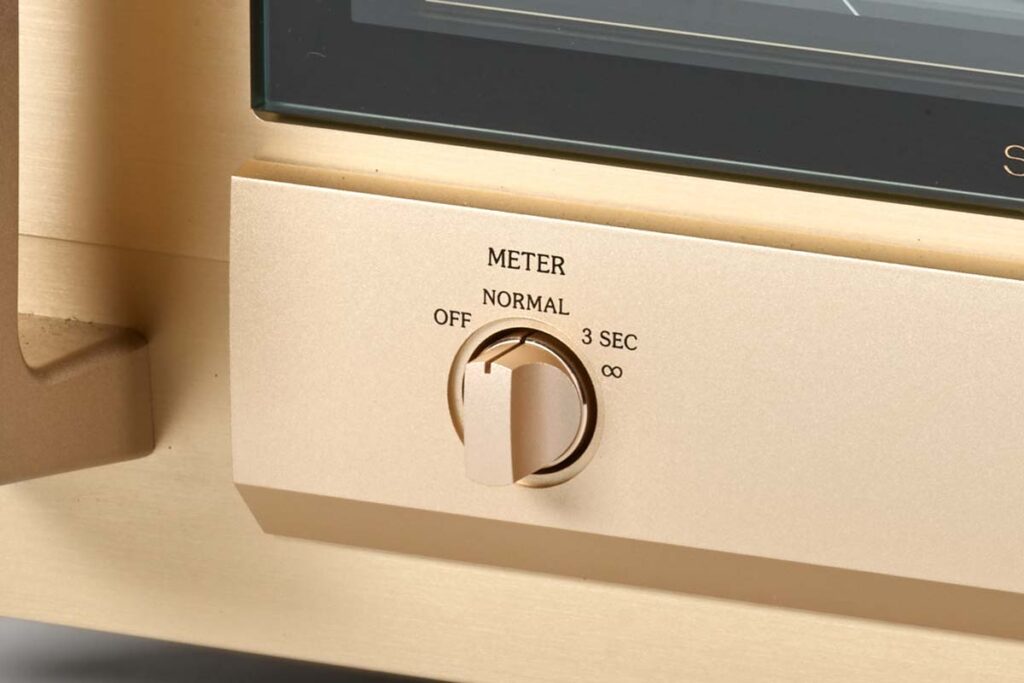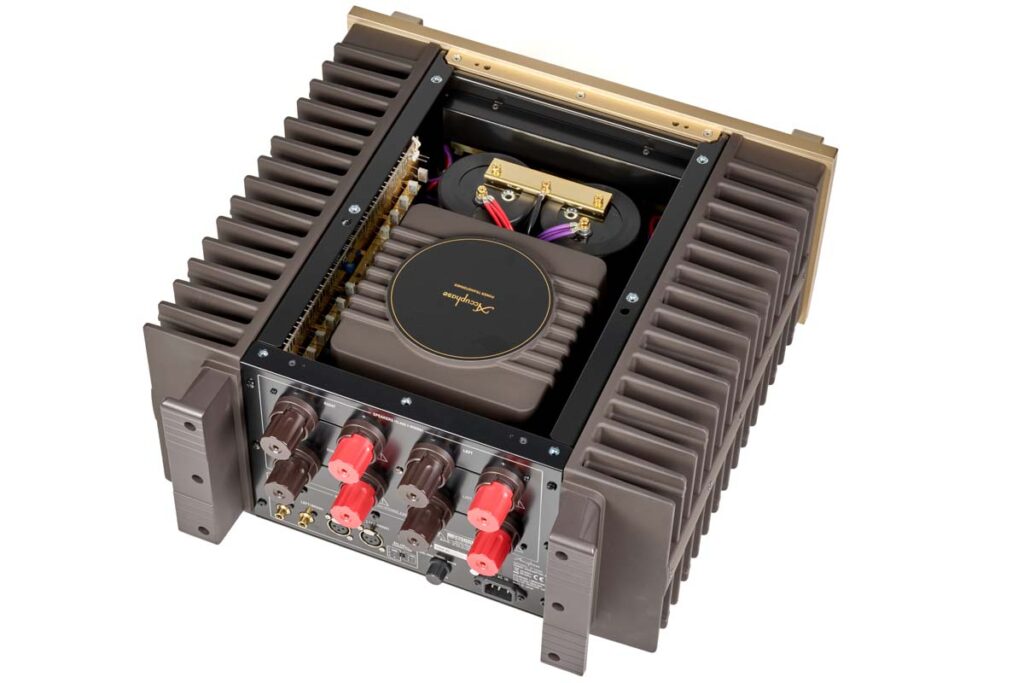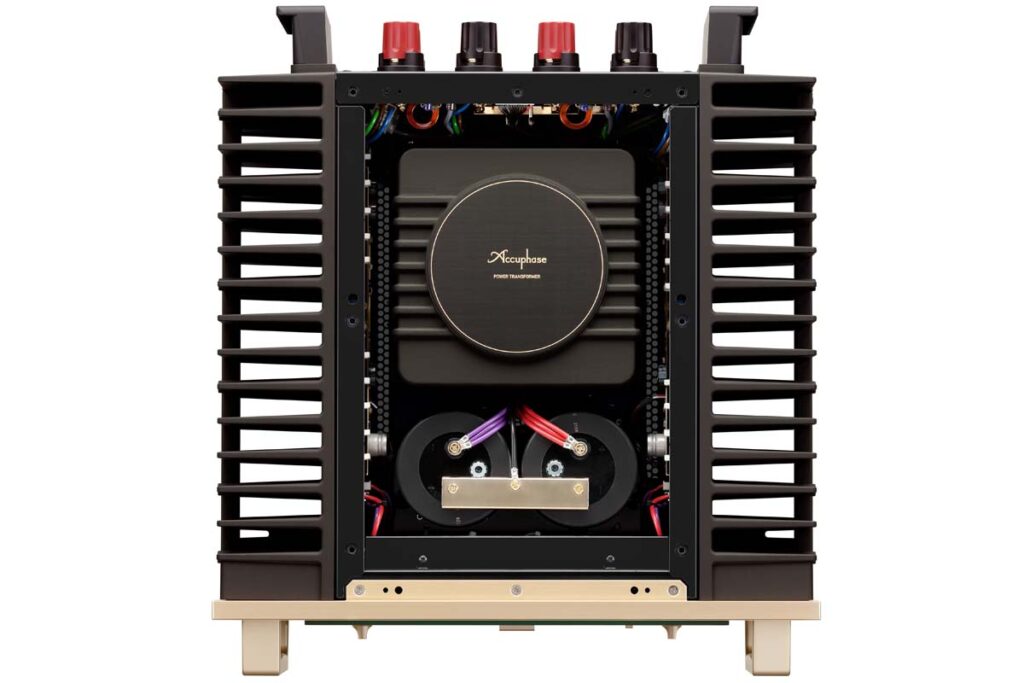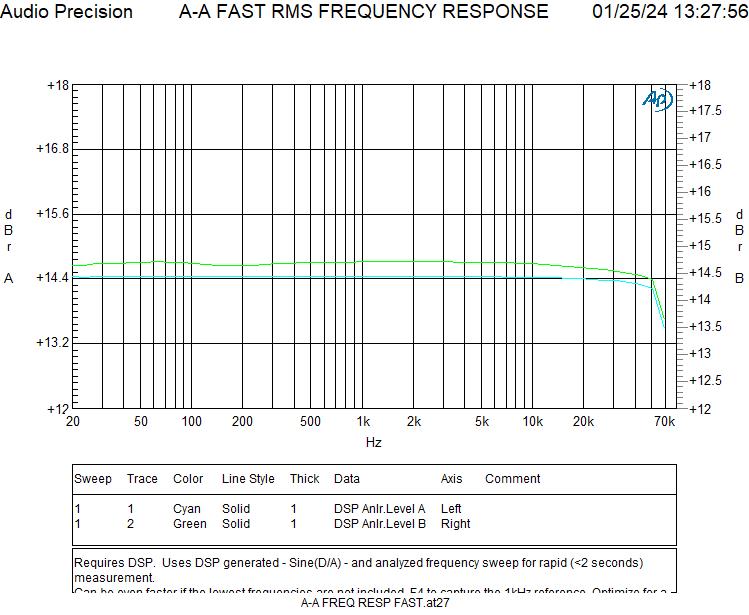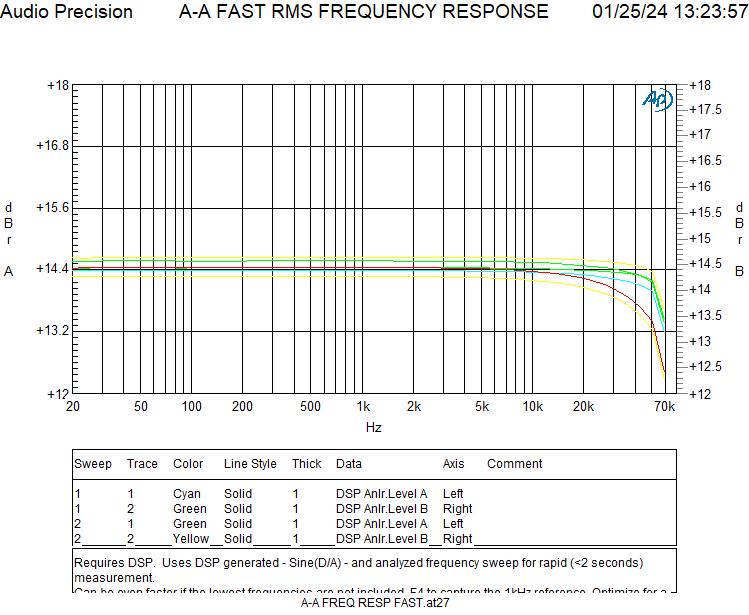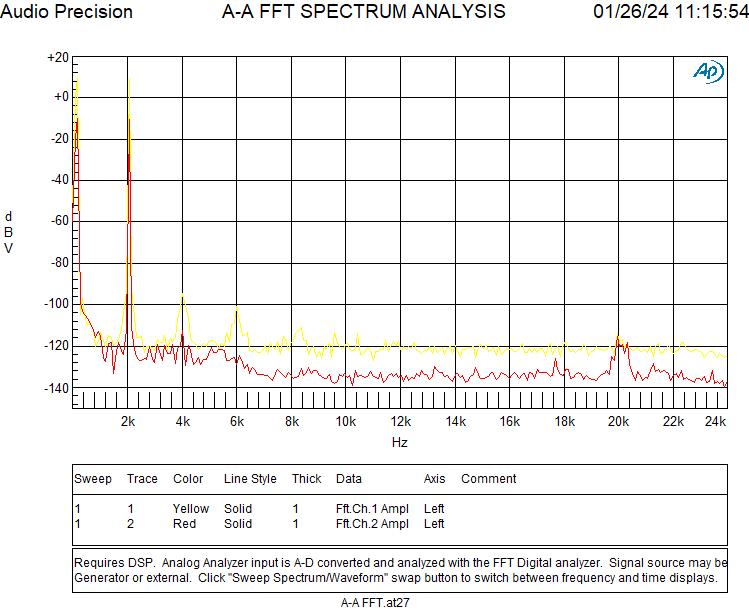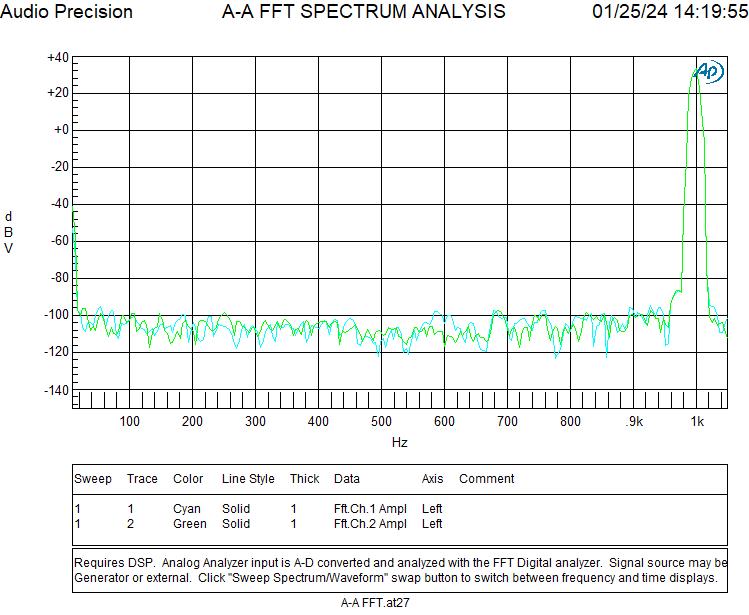You really can’t say any more about the Accuphase P-7500 than the subtitle. The stereo power amplifier is the ultimate display of engineering prowess: its design is outstanding, and each and every one of its countless details reflects over 50 years of experience. But best of all, the sober, objective craftsmanship of the Japanese results in an incomparably linear musical experience – high end in its purest form!
My gut always gets a little nervous at the thought of reviewing a power amplifier. After all, we’re talking indispensable yet comparatively unexciting components that – apart from one or two connections – rarely have any features worth talking about. More often than not, you’ll find classic circuitry inside that has been described umpteen times already. And as far as their performance is concerned, big power figures aren’t going to blow anyone away in the age of Class D. Nine out of ten power amplifiers could easily be discussed in just a few lines. When dealing with a power cell from Accuphase, however, the situation changes completely. Anyone who has ever experienced the Accuphase P-7500 in person has fallen in love with it. The power amplifier exudes a serenity and grandeur that is difficult to put into words – connoisseurs of the Japanese manufacturer will know what I mean. What’s more, its flexible, functional and easy-to-understand features teach us that purism is not a prerequisite for perfect sound after all. But before I drift off into indulgence, let’s start at the beginning.
Some three months ago, Accuphase distributor P.I.A. paid us a visit. In addition to the P-7500, P.I.A. had brought along the C-2300 preamplifier and the DP-570 CD/SACD player as well. We were assured that we had to experience the power amplifier in its natural habitat, hence the two unexpected guests. The massive stereo powerhouse weighs an impressive 50 kilograms. Nevertheless, setting it up was a pleasure: after lifting the lid off the box, you are presented with the P-7500 sitting in a carrying frame of sorts. Two people can easily move it to its destination – the power amplifier isn’t even connected up yet and the Japanese craftsmanship already shows. As soon as it’s placed in the rack, we plug all the necessary cables in the appropriate sockets: power, an XLR pipeline to the preamplifier and the speaker cables to Wilson Audio’s Sasha V. It’s at this point that I get reminded of the quality of the gold-plated sockets and the grip of the Accuphase binding posts. The developers attach great importance to an outstanding yet functional feel. Even without using any tools, the velvety friction of the gigantic threads lets you tighten down spades with such force that you’d rather be worried about deforming them than about the connection being loose. Mere moments later, the first sounds float through the room, leaving everyone present frozen with awe.
For an initial function check, we grabbed the next best SACD and placed it in the drawer of the DP-570, which now projected soft piano tones into the room. I got hooked immediately, but not so much because of the sound itself, but above all because what happened between the notes: quiet and sublimity against a pitch-black background. Singing praises to the SACD (and the DSD sound format), a sound engineer explained to me once that it was the only media with which he could capture the “breath” of a concert hall. The dynamic range of the format was large enough to reproduce the abyssal, gentle wafting of the air. However, most setups don’t know what to do with this kind of information. The wonderfully modulated decay of the piano notes revealed the dimensions of the recording room to us – vivid and palpable as if we were standing right in the middle of it. The system conjured up the frequencies in our listening room in such a clean and orderly fashion that the moment of the recording seemed physically tangible.
These first impressions are the result of more than 50 years of tireless research and development. The gentlemen from Yokohama have been improving and optimizing their circuits since 1972. Roughly speaking, the concept of the P-7500 is based on three cornerstones: perfect signal current feedback, which avoids crossover distortion in the interaction of the positive and negative half-waves, is a matter of course. Even the brand name reflects the unconditional desire for “accurate phase”. The manufacturer also ensures an impressive output power of 300, 600 and 900 watts (8/4/2 Ω). The enormous damping factor of 1000 ensures that the power amplifier doesn’t cave in under its own power: with this combination, the 7500 should be able to drive even the most demanding loads, i.e. the most exotic speakers, without ever losing its exemplary light-footedness and linearity.
The third aspect is covered by a whole catalog of measures and is something like the “public enemy number one”: the (preferably complete) elimination of noise and unwanted interference. According to the manufacturer, the secret lies above all in the perfectly matched amplifier layout. While most power amplifiers use similar gain factors in their input and power stages, Accuphase squeezes an almost ludicrous amplification factor of 12.6 x out of the signal input stages of its P-7500. The actual power stages merely double (2x) the result. The underlying logic is overwhelming: the input stages with their symmetrical design simply produce much lower noise than the output stages. A large part of the impressive S/N ratio of a maximum of 135 decibels (manufacturer’s specification) is achieved precisely here. The MCS+ circuit architecture (Multiple Circuits Summing-up) also contributes to this. Basically, this refers to the fully symmetrical structure of the signal processing, which – according to the developers – terminates up to 30 percent of unwanted background noise compared to normal asymmetrical processing.
The wonderful powerhouse is driven by a power supply complex built around a large toroidal transformer encapsulated in solid aluminum and two impressive electrolytic capacitors, each with 60,000 microfarads of filtering capacity. Of course, other manufacturers can do this, too. However, countless details illustrate the superiority of the Japanese: for example, large coils with high-edge winding are used in the circuit breaker assembly, which is installed on a circuit board together with the terminals. With the same number of windings, these expensive components offer three times the conductor cross-section. All circuit boards in the housing are made of GRP (fiberglass) and fluorocarbon resin, which is characterized by favorable resonance properties and – as a super dielectric – minimal losses.
In the course of our research, we were confronted with a multitude of superlatives, the sum of which we could hardly believe. Consequently, we sent the P-7500 off to a measuring lab to get to the bottom of its true qualities. The results were more than astonishing: if Accuphase can be accused of anything at all, it is that the Japanese are extremely “conservative”, almost to the point of sandbagging, when it comes to spec figures. We were able to nail down the power output of the amplifier at 312, 620 and 903 watts (8/4/2 Ω), several percent more than the official manufacturer’s specifications. Our measurements also exceeded the official specifications for the other values – you can find out more about this at the end of the article. In short, the excellence of this exceptional power plant can also be officially confirmed.
A not insignificant aspect of a power amplifier is its mechanical construction. Here too, the P-7500 lives up to its role model character: in principle, it consists of a solid metal base plate, in the center of which rests the aforementioned giant power supply unit. To prevent interaction with other components, the manufacturer uses well-damped isolator feet, whose felt will certainly not cause any scratches in the rack. The actual amplification circuits are suspended from the sides. These are two large modules with ten pairs of transistors mounted directly to the powder-coated heat sinks. Anyone who has already lost a piece of clothing while handling ill-tempered heatsinks will love the rounded-off and deburred Accuphase fins. Meanwhile, practicality is also evident in details such as the front and rear “handles” and an elongated brace that extends centrally over both radiators. It dampens the metal fins and can also be used as a handle in an emergency, for example to heave the heavy power amplifier onto the center of its base or rack level – manhandling is explicitly permitted here.
And while we’re on the subject of handling: You should definitely do the same with the power amplifier’s various controls – their tactile quality is indescribable. There are a total of six switches, which is amazing for a stereo power amplifier. In addition to the central power switch on the front of the housing, there is an input selector switch (XLR/cinch) and a three-stage button for the two large level meters. These can be operated with normal and extended hold time (3 sec.) or switched off completely. Next to the input is a four-position switch for the amplification. It can be attenuated by either 3, 6 or 12 decibels, for which there may be two good reasons: For one, it is one of the various measures to lower the noise floor, which is naturally reduced as you lower the input gain. Secondly, there are preamplifiers out there that have idiosyncratic volume controls. It is not uncommon for the first one or two centimeters to be way too sensitive. This makes fine-adjusting the volume tricky, especially for quiet listening.
Reducing the gain by 6 or 12 decibels gives such potentiometers more travel. We were unable to detect any sonic effect of the switch in our setup/listening room, so it remained in the “Max” position during the test.
There is also a button on the rear for the phase assignment of the XLR connections – really, every device should have this feature. Information on the assignment can be found in the preamp’s instructions and documentation. Finally, right next to it is the three-stage selector switch for the operating mode of the P-7500. In addition to stereo use (“Normal”), the power amplifier can be bridged (“Bridge”), which increases its output to 1200/1800 watts (8/4 Ω). Bi-amping operation is also possible (“Dual Mono”). With the latter two, only the signal from the left input (XLR and RCA) is processed and routed to both power amplifier cables. To avoid accidents, the manual contains block diagrams and measurement diagrams as well as well-illustrated instructions for the two “special cases”. And that’s basically it for the equipment.
As already mentioned, it is not easy to label the sound of this power amplifier with the usual predicates. One reason for this is, of course, that the P-7500’s ability is revealed above all “between the notes”: This incomparable calm and tidiness in the imaging and depth layering that puts the listener into the recording. Meanwhile, there is no need to worry about sheer brawn: The dynamics and headroom of such a potent power source leave nothing to be desired. Of course, an amp of this caliber also has a feel for subtleties and details. In addition to the Wilson Audio, the P-7500 naturally played a wide range of loudspeakers over the weeks and months, including the Audio Note AN-K, which is not at all undemanding. But as the manufacturer’s specifications and our measurements suggest, the power amplifier remains unfazed by the speaker. The P-7500 plays unerringly neutral and linear at all loads. Things get more interesting when we combine it with other preamps or variable output sources. Only when these come into the equation can we speak of attributes such as “brighter” and “more transparent”. Of course, it makes little sense to discuss this here, as we are then talking about the preamps and not the 7500s.
What’s more important is the ultimate outcome: after trying out various options – such as direct operation with the Lumin X1 variable output streamer or the Aavik C-580 preamplifier – we returned to the C-2300. In duet, the siblings have a brilliance and smoothness that we could not achieve with any other combination. A “perfect match”, as they say, that can’t be pinned down to any musical preference: The setup brings large orchestras across with wonderful differentiation and timbre. AC/DC’s guitar riffs (Back In Black) bring a Marshall stack to life in the listening room with attacks that press the listener into their seat. With Brendan Perry’s “This Boy” (Ark), I was beguiled by the long, flawless reverb tail on the “Rims” in the intro to the song. The performance of “The Bogus Man” from the same album was also remarkable. An abyssal synthesizer texture serves as the supporting base here. Even at medium levels, Brendan Perry’s sonorous voice, percussion and synth pads like to get in each other’s way. With smaller amps, you can even hear the pads pumping with every pulse of the bass drum – compression effects caused by the amplifier running out of breath. Of course, none of this happens with the P-7500. Wilson Audio’s Sasha V is a four-ohm speaker, so the Accuphase power amplifier works it with just over 600 watts. It can amplify all the frequencies of the track just as linearly, creakily and wobbly as the producer wanted to hear at the mixing desk at the time.
Rarely have I experienced a component (let alone a power amplifier) that makes it so difficult not to fall head over heels in love with it. This surprises me all the more in the case of the P-7500, as its character is barely tangible and it doesn’t beguile me with raging dynamic thunderstorms. What we have here is a piece of technology that has been refined down to the last detail and simply does exactly what it is supposed to do: Amplify signals without adding even a hint of its own signature. This may sounds sober on paper, but is absolutely stunning in practice.
OUTSTANDING PERFORMANCE
“An amplifier displaying a high level of craftsmanship and appearance with very good measurement results. The manufacturer’s specifications are met or exceeded,” it says below the 15 pages of diagrams, values and strings of figures. Anyone who deals with measurement technicians from time to time will realize that these lines mean downright euphoric praise. Don’t worry, we’re not going to chant off a never-ending sermon of technical gibberish. Instead, the aim here is to back up the brilliance and sophistication of Accuphase’s engineering with a few select facts.
The most important values have already been mentioned in the article: The P-7500 delivers a solid 312, 620 and 902 W at 8, 4 and 2 Ω. The manufacturer stays on the safe side with its specifications at 300, 600 and 900 W. However, wattage figures ultimately mean little. The decisive factor is how linearly an amplifier can deliver its power to a complex load. We carried out a small experiment and compared a 4-Ω resistor with a two-way loudspeaker (Celestion SL-6, 8 Ω):
Of course, the curve of the loudspeaker looks slightly different, but it remains extremely linear up to 50 kHz – moreover, the deviations from the idealized resistor remain within 0.3 dB at all times – excellent.
The Japanese framed the bandwidth of the P-7500 in the usual 20 Hz to 20 kHz brackets. However, our measurement (2.83 V/1 W, 8 Ω) proves that the manufacturer is almost too strict with itself here: the deviation at 20 kHz is -0.2 dB, even at 60 kHz it is only -1 dB:
Many other manufacturers would probably specify a bandwidth of 70 or even 100 kHz here. Meanwhile, the power amplifier shows no signs of limitation towards the low frequencies – we can therefore assume that it also delivers “downwards” whatever the speaker can handle. We do hope your phono pre has a subsonic filter.
Of course, we also took a look at the noise (or signal-to-noise ratio). The graph below shows the noise in the FFT analysis:
Note that our idealized signal (the simulated loudspeaker load is 8 Ω) is at +18 dB on the far left. According to basic math, this gives us an average of 138 dB up from the noise floor at around -120 dB. Here, too, the manufacturer’s specifications are far exceeded – more than 6 dB better than Accuphase’s claim of 130 dB cuts the noise in half once again. The following graph focuses on the range below 1 kHz:
In a poor design, influences and interference from the power supply could be detected there. But the P-7500 also proves itself in this discipline. We can repeat this unreserved praise in the distortion measurement: The left and right channels show the tiniest deviations here, but remain well below the manufacturer’s specifications.
Finally, we looked at details such as the accuracy of the instruments. They measure the output voltage. 10 W into 8 Ω therefore produces the same reading as 20 W into 4 Ω. The deviations of the instruments are 3 % on the left and 1.8 % on the right – more than sufficient for visualization. The gain scaling, which can be set via a dial on the front, is also interesting. With our reference signal (via XLR input), we achieved a gain of 28.78 dB (max), 25.72 dB (-3 dB), 22.01 dB (-6 dB) and 16.96 dB (-12 dB). Of course, you can get all fussy about decimal places – but we are more than satisfied.
Accompanying Equipment
CD player: Accuphase DP-570, Audio Note CD 3.1x, Esoteric K-05XD | Streamer/Media player: Lumin X1, Aavik S-580, Linn Klimax DSM | Preamplifier: Accuphase C-2300, Electrocompaniet EC 4. 8 Mk II | Integrated amplifier: Aavik I-580 | Power amplifier: Luxman M-10x, Burmester 216 | Speakers: Wilson Audio Sasha V, Wilson Audio Sasha DAW, Audio Note AN-K SPx | Cables: WestminsterLab, AudioQuest | Rack: Finite Elemente, Solidsteel, Creaktiv
Power amplifier Accuphase P-7500
Concept: stereo power amplifier with switchable bi-amping and bridge mode | Inputs: RCA/XLR | LS terminals: 2 pairs of bi-wiring taps for bananas and spades | Rated power (8/4/2 Ω): 300/600/900 W | Bandwidth (-0.2 dB): 20 Hz to 20 kHz | Distortion (4-16 Ω): 0.03 % | Signal-to-noise ratio (Max/-12 dB): 130/135 dB | Damping factor: 1000 or higher | Gain settings: Max, -3/-6/-12 dB | Power consumption (standby/idle/operating): 0.3/142/450 W | Special features: VU meters adjustable/switchable, 3 operating modes, XLR phase assignment switchable, power button/input selector on the front | Accessories: Mains cable | Dimensions (W/H/D): 47/24/52 cm | Weight: 49 kg | Warranty period: 3 years (after registration) | Price: around €20,500
P.I.A. Hi-Fi Vertriebs GmbH
Rosenweg 6
64331 Weiterstadt
Phone +49 6150 50025
info@pia-hifi.de

